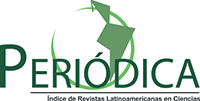Tuberculose: análise do percurso do doente durante o tratamento em Ribeirão Preto/SP
DOI:
https://doi.org/10.5216/ree.v18.39051Palavras-chave:
Tuberculose, Terapia Diretamente Observada, Sistemas de Informação em Saúde, Serviços de SaúdeResumo
Objetivou-se analisar o percurso do doente de tuberculose (TB) durante o tratamento no sistema de serviços de saúde. Estudo epidemiológico, descritivo, realizado em Ribeirão Preto, São Paulo. Como fontes de dados utilizaram-se os registros relacionados ao tratamento da TB do Sistema de prontuários eletrônicos municipal e o sistema de notificação estadual. As variáveis selecionadas para o estudo foram categorizadas nas dimensões de análise: demanda, recursos, processos/produtos e resultados. Foram selecionados 109 registros de doentes de TB acompanhados em ambulatórios de referência para o tratamento da doença. Frente a alguma intercorrência notou-se a preferência por procurar o Pronto-atendimento 67(61,5%). O atendimento era centrado em médicos e auxiliares/técnicos de enfermagem 108(99,1%), sendo estes os principais responsáveis pelas visitas domiciliares e pela supervisão medicamentosa (71,6%). Os resultados permitiram observar a centralização do atendimento no nível secundário da atenção, privilegiando equipes especializadas e mantendo este ponto como o principal ordenador do cuidado.
Downloads
Downloads
Publicado
Edição
Seção
Licença
Copyright (c) 2016 Revista Eletrônica de Enfermagem

Este trabalho está licenciado sob uma licença Creative Commons Attribution 4.0 International License.














